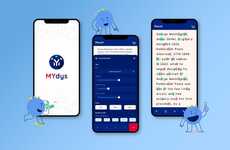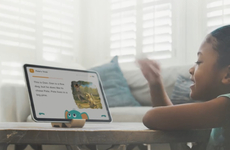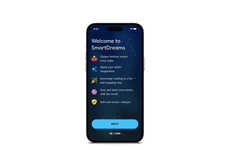
Huawei's StorySign App Uses AR and AI to Translate Stories
Justin Lam — December 4, 2018 — Tech
References: cnet & venturebeat
Designed to enhance story time for deaf children, Huawei's StorySign app utilizes a mixture of AI and AR to bring books to life for children who can't hear the story being read. Developed in a collaboration between Huawei, the European Union of the Deaf, Penguin publishing, and the animation gurus at Aardman. Given that sign language is as diverse as spoken language, and can range from country to country, the StorySign app currently features support for sign language in British, French, German, Italian, Spanish, Dutch, Portuguese, Irish, Belgian Flemish, and Swiss-German.
The StorySign app currently only supports the children's book 'Where's Spot?' but its creators will be adding more content in the future. To use the app, parents or children simply need to hold their phone up to the pages, which will then summon an avatar that will sign out the words in real time as users flip through.
Image Credit: Huawei
The StorySign app currently only supports the children's book 'Where's Spot?' but its creators will be adding more content in the future. To use the app, parents or children simply need to hold their phone up to the pages, which will then summon an avatar that will sign out the words in real time as users flip through.
Image Credit: Huawei
Trend Themes
1. AR Storytelling for Disability - The AR and AI technology used in the StorySign app can be applied to extend storytelling experiences for children with disabilities.
2. Diverse Sign Language AR Support - The need to support different sign languages can drive the development of AR and AI-powered apps for communication.
3. AR Translation for Educational Content - AR and AI technologies can be used to translate other educational content for people with disabilities.
Industry Implications
1. Education - Innovators can develop AR-enhanced educational tools and platforms that cater to students with different learning needs.
2. Media and Entertainment - Media companies can explore creating AR-enhanced content and storytelling experiences that engage people with disabilities.
3. Healthcare - Healthcare professionals can harness AR and AI technologies to develop new communication and therapy tools for patients with disabilities.
4.8
Score
Popularity
Activity
Freshness























